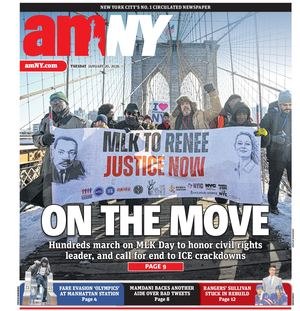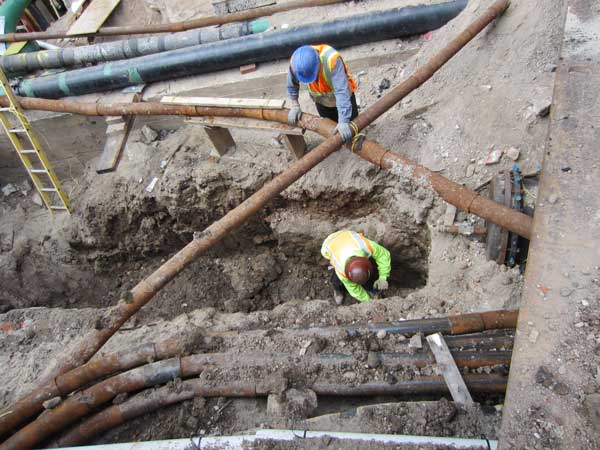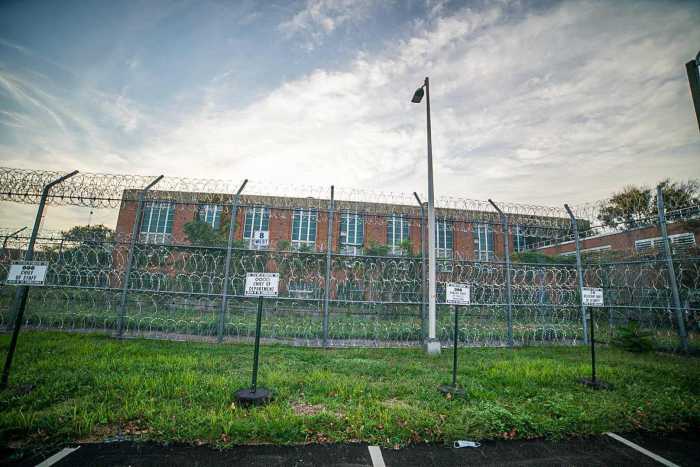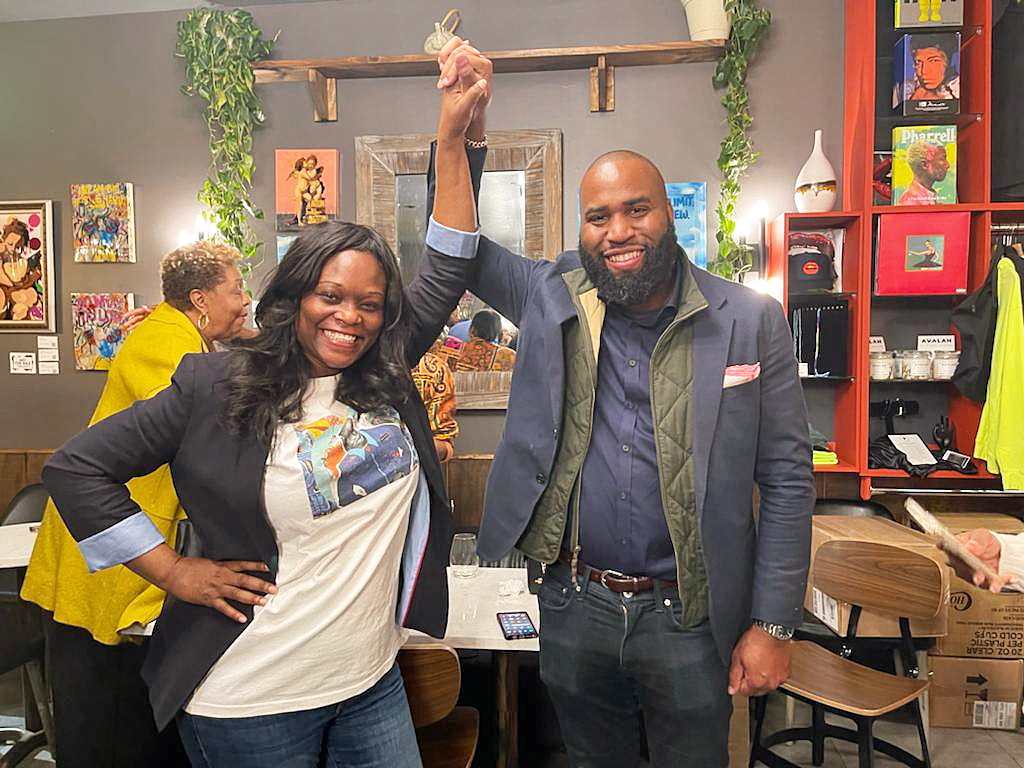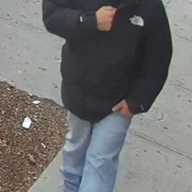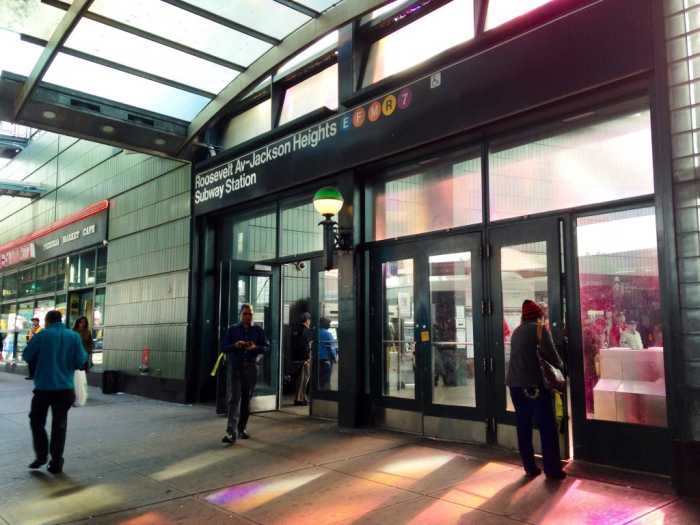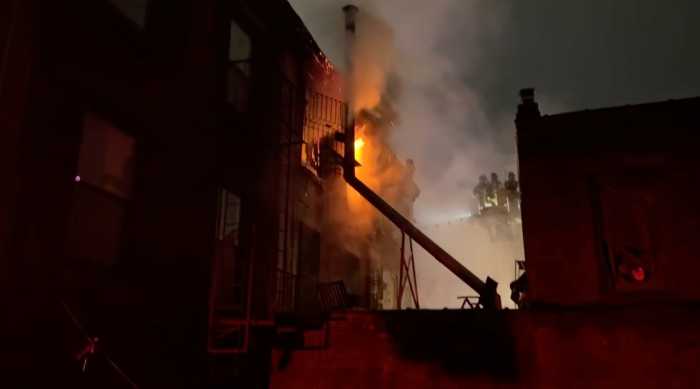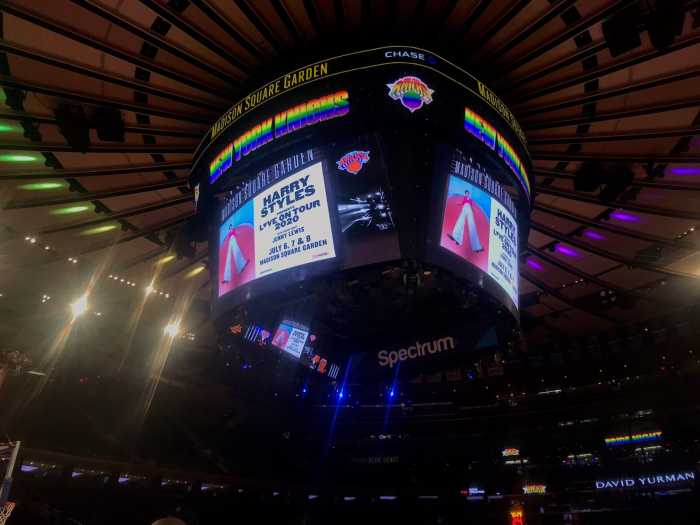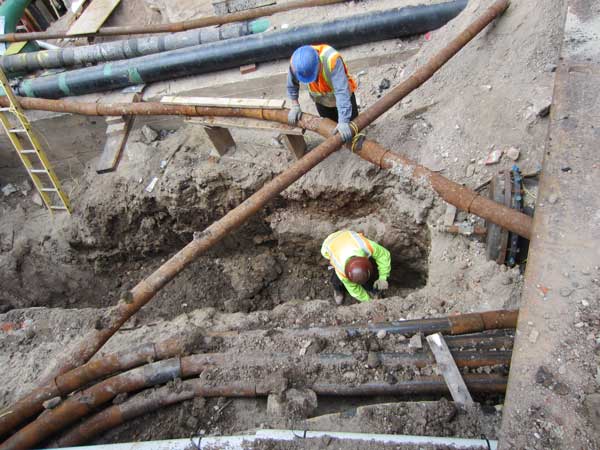 [/media-credit]
[/media-credit]
- Construction workers along Fulton Street are uncovering relics of the neighborhood’s past as they replace old water mains.
BY ALINE REYNOLDS | As the city rips apart Fulton Street and Peck Slip in the South Street Seaport to install new water mains, a team of archeologists has discovered a trove of hidden artifacts. While the relics are informing knowledge about the past, they’re also pressuring archeologists to crack larger puzzles concerning the neighborhood’s rich, complex history.
Most recently, on Mon., March 12, Chrysalis Archeology President Alyssa Loorya, the archeologist overseeing the Downtown excavation, uncovered a portion of an 18th-century stone wall in front of 40 Fulton St. that is believed to have belonged to the estate of either the Van Tienhovens or the Van Cortlandts, two wealthy Dutch merchant families who came to New Amsterdam in the 17th century. The finding is one of a slew of recent discoveries Loorya’s team has made since fall 2009, when the city Department of Design and Construction began the Fulton Street reconstruction project.
The wall is one of three walls and two wells the archeologists have found underneath Fulton Street that is suspected to have come from the same residential estate, according to Loorya.
Which estate the structures come from is still an unknown, however, since the archeologists have yet to determine the boundary line that once separated the two residential properties.
“It’s not common that you’d see so many different structures from a single property dating back to the 18th century all in this one area,” said Loorya of the findings. “We’re trying to overlay the maps [we’ve found] with the current map to see if we can nail down who is the actual property owner.”
Loorya broke off a small fragment of the wall, which has been reburied into the ground, for dating and other testing. The fragment will then be compared to structures that made up neighboring estates.
These analyses will offer the archeologists a better snapshot of the area’s geographical layout, Loorya noted.
“The interesting thing is, this is smack in the middle of Fulton Street [and therefore dates back to] the period when that part of Fulton Street was [part of private property],” said Loorya. “Once we begin to map everything, we’ll be able to piece together and extrapolate some of the dimensions of the properties — where the family placed its wells, where it had outbuildings, and where the wells and outbuildings may have been relative to the house and to the street line.”
Earlier this month, the crew uncovered artifacts in a muddy section of Peck Slip, which the archeologists began excavating last August. The discovery left them with more than 40 Ziploc bags full of broken pottery from the early-to-mid 19th century.
“When we started cleaning it off, we found a whole range of [dinner plates] with the same patterns in different colors,” said Loorya. “They were probably discarded items from a supply store.”
The archeologists also recently uncovered timber from landfills that make up the foundation of the modern-day Seaport. Using dendrochronology (otherwise known as tree ring dating), the team can not only find out the trees’ species but also build a more detailed timeline of the landfill’s formation.
The crews have also uncovered the foundation remains of a 19th-century print shop, several hundred ink bottles with ink still in them, a bone toothbrush, wooden water mains, and clusters of drinking goblets and serving platters.
And while Fulton Street and Peck Slip will be completed in 2013 and 2016, respectively, Loorya and her crew will make do with the artifacts already uncovered to help unlock the mysteries of the Seaport of the past.
